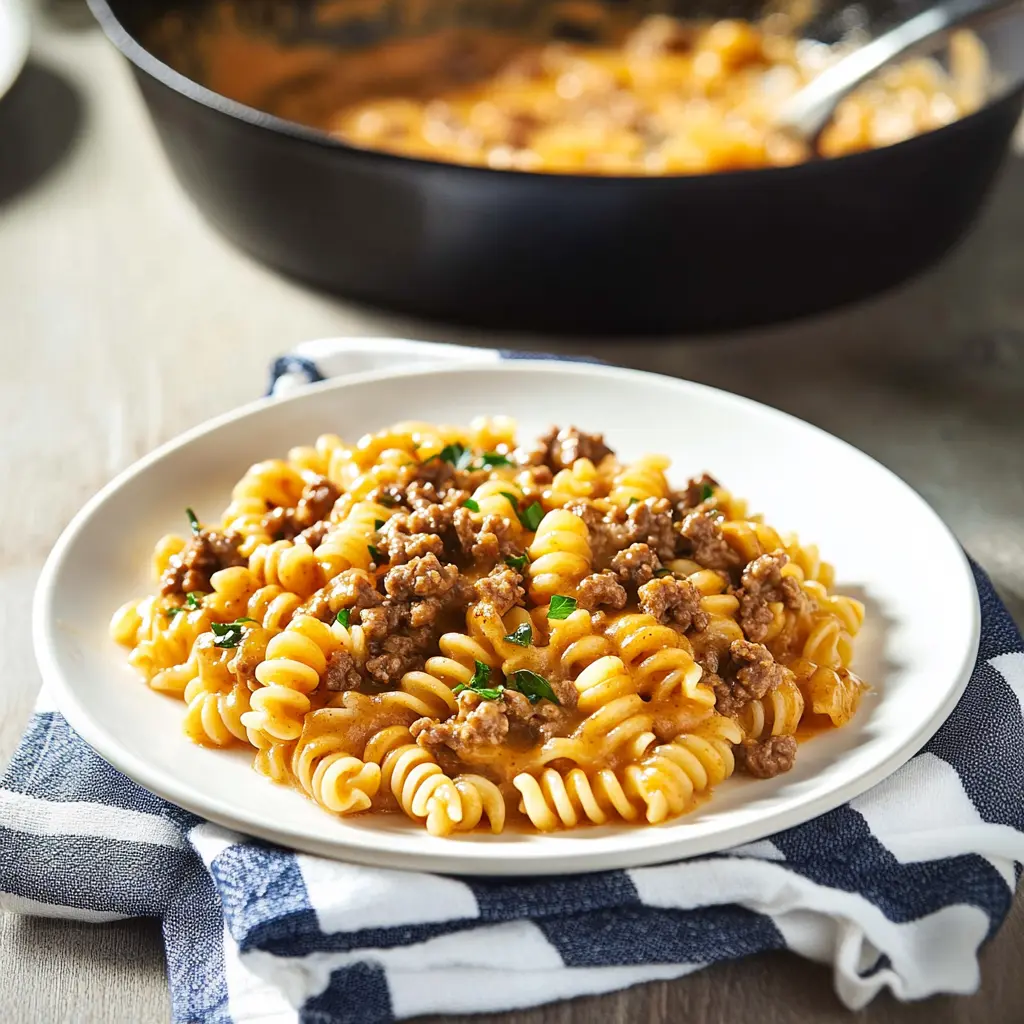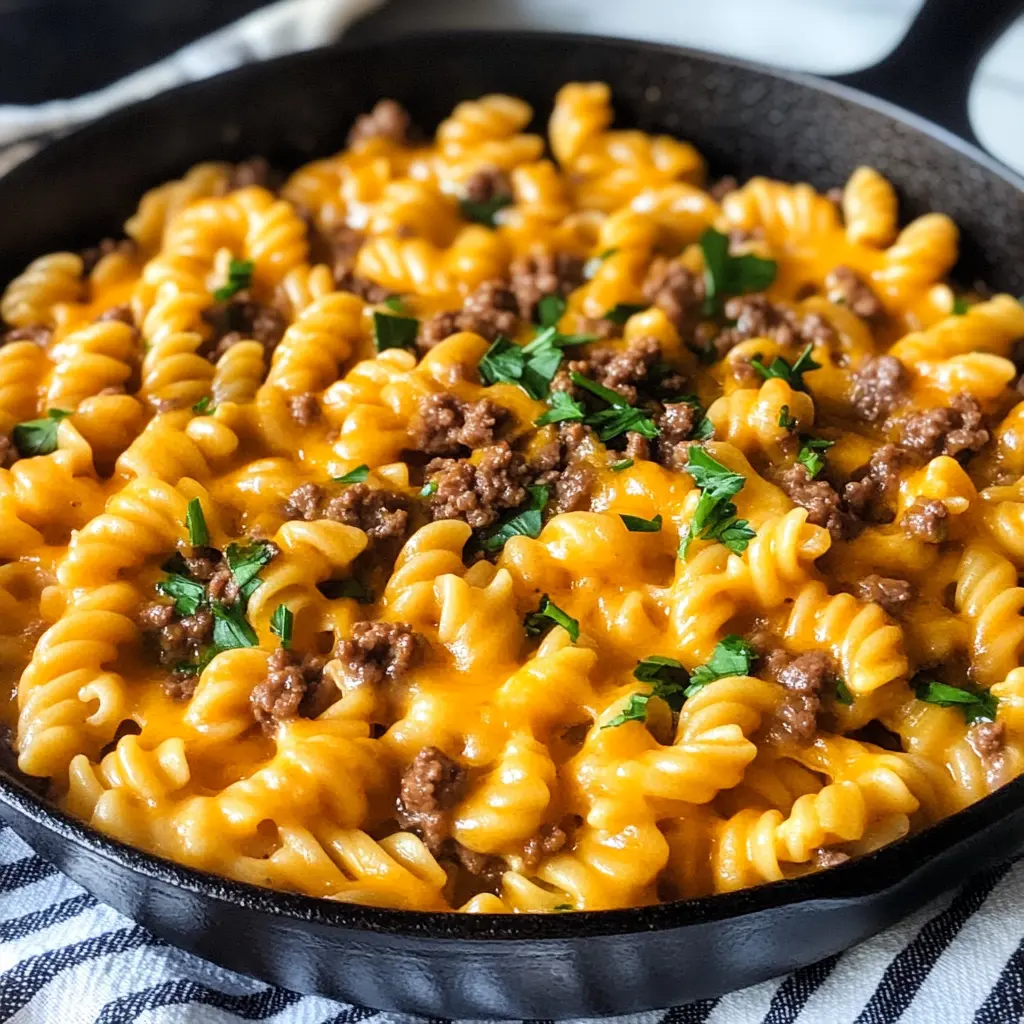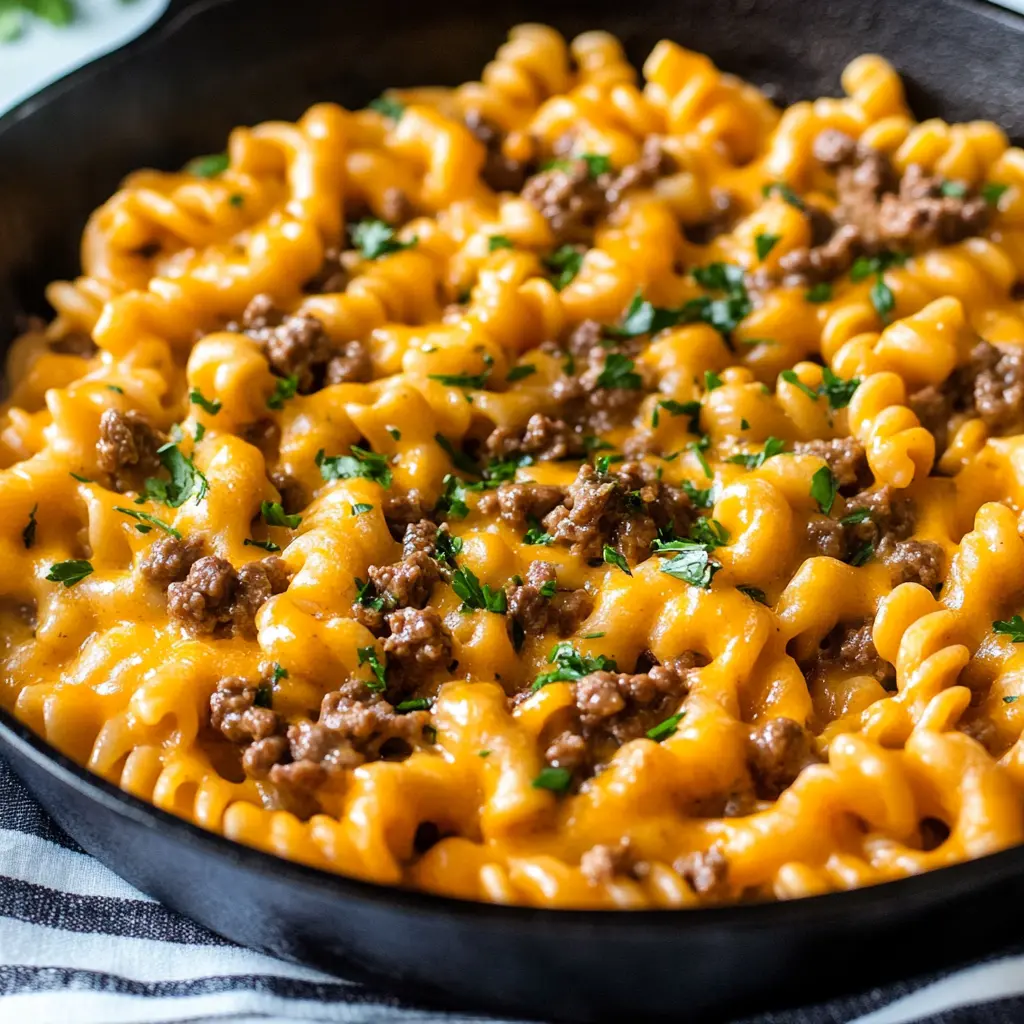Introduction
Introduction to Beef broth in Hamburger Helper
Hamburger Helper, an iconic pantry staple, has graced American kitchens since the 1970s, transforming the way families approached quick and convenient meals. This beloved boxed dinner kit, introduced by Betty Crocker, offered a solution to busy households seeking delicious, hearty meals without the hassle. With its simple instructions and affordable ingredients, Hamburger Helper quickly became a go-to for countless families, cementing its place in the annals of comfort food history.
At its core, Hamburger Helper combines ground beef with pasta and a savory sauce mix, creating a filling and flavorful dish. Over the years, variations have emerged, each adding a unique twist to the classic recipe. Among these variations, one stands out for its ability to enhance the dish’s depth and richness: incorporating beef broth. This simple yet impactful addition elevates the flavor profile, making each bite more robust and satisfying.
Beef broth, a staple in many kitchens, is known for its rich, savory taste and versatility. When used in Hamburger Helper, it infuses the pasta and meat with a deep, beefy flavor that water or milk alone can’t achieve. This combination not only amplifies the taste but also creates a more cohesive, well-rounded dish. Whether you’re a longtime fan or new to the world of Hamburger Helper, adding beef broth can transform your meal into a culinary delight that’s both comforting and irresistible.
Ingredients and Preparation
Basic Ingredients for Homemade Hamburger Helper
Creating a delicious homemade Hamburger Helper starts with gathering the right ingredients. While the boxed version offers convenience, making it from scratch allows you to control the quality and taste of each component. Here’s a breakdown of the basic ingredients you’ll need:
Ground Beef: The heart of the dish, ground beef adds protein and rich flavor. Opt for lean ground beef to reduce excess fat without compromising taste.
Pasta: Traditional Hamburger Helper uses elbow macaroni, but you can experiment with other pasta types like rotini, penne, or shells. The key is choosing a pasta that cooks well and holds the sauce.
Beef Broth: Using beef broth instead of water or milk enhances the dish’s depth and richness. The broth infuses the pasta with a savory, beefy flavor, making every bite more satisfying.
Milk: Milk adds creaminess to the sauce, balancing the robust flavor of the beef broth. Whole milk is ideal, but you can use lower-fat options if you prefer.
Cheese: Cheddar cheese is a classic choice, but feel free to mix in other cheeses like mozzarella, pepper jack, or a blend to add different flavor notes. Cheese not only thickens the sauce but also adds a comforting, gooey texture.
Vegetables and Seasonings: Adding vegetables like onions, garlic, bell peppers, or spinach can enhance the nutritional value and flavor profile of your dish. Common seasonings include salt, pepper, paprika, and Italian seasoning.
For those looking to explore other comfort food recipes, check out this Chick-fil-A Mac and Cheese Recipe.
Step-by-Step Preparation
Browning the Beef: Start by heating a large skillet over medium-high heat. Add the ground beef, breaking it up with a spoon as it cooks. Continue until the beef is browned and no longer pink, then drain any excess fat.
Adding Aromatics and Seasonings: Once the beef is browned, add diced onions and minced garlic to the skillet. Cook until the onions are translucent and the garlic is fragrant. This step builds the foundational flavors of your dish. Next, sprinkle in your seasonings. Salt, pepper, paprika, and Italian seasoning are great choices. Stir to ensure the beef and aromatics are well-coated with the spices.
Incorporating the Beef Broth: Pour in the beef broth, stirring to combine it with the beef mixture. The broth should cover the beef and aromatics, creating a flavorful base for cooking the pasta. Bring the mixture to a simmer.
Cooking the Pasta in the Broth: Add your chosen pasta to the skillet, ensuring it’s submerged in the broth. Cover the skillet and let the pasta cook according to the package instructions, usually about 10-12 minutes. Stir occasionally to prevent sticking and ensure even cooking. The pasta will absorb the broth, becoming infused with rich, beefy flavors.
Finishing with Milk and Cheese: Once the pasta is tender, reduce the heat to low and stir in the milk. Gradually add the cheese, stirring until it melts and forms a creamy sauce. The combination of beef broth, milk, and cheese creates a luscious, flavorful sauce that clings to each pasta piece.
For more detailed explorations of mac and cheese ingredients, check out this resource: What is Mac and Cheese Made Of.
By following these steps, you’ll create a homemade Hamburger Helper that’s rich, satisfying, and far superior to any boxed version.
Variations and Enhancements
Popular Variations of Hamburger Helper
Homemade Hamburger Helper is a versatile dish that lends itself well to a variety of creative twists. Here are some popular variations to keep your meals exciting:
Using Different Types of Pasta: While elbow macaroni is the traditional choice, experimenting with other pasta shapes can add a fun and unique texture to your dish. Consider using rotini, penne, or shells. These pasta types not only provide a different mouthfeel but also hold onto the sauce differently, giving each bite a new experience.
Adding Vegetables: Incorporating vegetables is a great way to boost the nutritional value of your Hamburger Helper. Spinach, bell peppers, carrots, and peas are excellent choices. These veggies add color, flavor, and a variety of nutrients. For instance, spinach wilts beautifully into the sauce, while bell peppers and carrots add a delightful crunch.
Different Cheese Options: The type of cheese you use can significantly alter the flavor profile of your dish. Cheddar is a classic choice, but mixing in mozzarella can add a creamy texture, while pepper jack offers a spicy kick. Combining different cheeses can create a more complex and interesting flavor.
For further insights into cheese options for your mac and cheese recipes, you can visit this guide: Best Cheeses for Mac and Cheese.
Making it Healthier
Hamburger Helper is delicious, but it can be made healthier without sacrificing flavor. Here are some tips to lighten up your meal:
Using Lean Ground Beef or Ground Turkey: Opting for lean ground beef can reduce the fat content of your dish. Alternatively, ground turkey is a great substitute that offers a lighter taste while still providing ample protein. Both options help maintain the dish’s heartiness while making it a bit healthier.
Low-Sodium Beef Broth Options: Traditional beef broth can be high in sodium, which might not be ideal for everyone. Look for low-sodium or no-salt-added beef broth options. This simple switch can significantly reduce the sodium content of your meal, making it a healthier choice.
Adding More Vegetables: Besides the basics like spinach and bell peppers, consider adding nutrient-dense vegetables such as broccoli, zucchini, or kale. These additions not only enhance the flavor and texture but also increase the dish’s fiber and vitamin content. More vegetables can make your Hamburger Helper more balanced and nutritious.
For those curious about the health aspects of similar dishes, this article might be of interest: Is Mac and Cheese Healthy.
By incorporating these variations and healthier options, you can enjoy a delicious and satisfying meal that caters to your dietary preferences and nutritional needs.

Cooking Tips and Tricks
Cooking Tips for Perfect Hamburger Helper with Beef Broth
Achieving the perfect Hamburger Helper with beef broth can be easy if you follow these essential cooking tips:
Ensuring Pasta is Cooked Just Right: Cooking the pasta perfectly is crucial to a good Hamburger Helper. Use a timer to avoid overcooking, which can make the pasta mushy. Ensure the pasta is al dente, meaning it’s cooked through but still firm to the bite. This texture provides a satisfying contrast to the creamy sauce.
Balancing the Flavors with the Right Amount of Broth: Using beef broth in Hamburger Helper enhances the flavor significantly. However, it’s important to get the quantity right. Too much broth can make the dish soupy, while too little can cause it to dry out. Start with the recommended amount and adjust as necessary, tasting along the way to achieve a balanced flavor.
Tips for Reheating and Storing Leftovers: To keep your Hamburger Helper with beef broth tasting fresh, store leftovers in an airtight container in the refrigerator. When reheating, add a splash of beef broth or milk to help revive the creamy texture. Heat gently on the stove or in the microwave, stirring occasionally to ensure even heating.
For more in-depth guides on cooking comfort food, check out this ultimate guide: How Long to Smoke Mac and Cheese.
Common Mistakes to Avoid When Using Beef Broth in Hamburger Helper
Making homemade Hamburger Helper with beef broth can be straightforward, but some common mistakes can impact the final dish:
Overcooking Pasta: One of the most common mistakes is overcooking the pasta. Always keep an eye on the pasta and check for doneness a minute or two before the package instructions suggest. Overcooked pasta can turn mushy and unappetizing.
Using Too Much or Too Little Broth: Getting the broth quantity right is crucial. Using too much beef broth in Hamburger Helper can make the dish watery, while too little can leave it dry. Stick to the recipe guidelines and adjust based on your texture preference.
Not Adjusting Seasonings Correctly: Seasonings can make or break your Hamburger Helper. Taste your dish as you go, especially after adding beef broth, to ensure the flavors are balanced. Adjust salt, pepper, and other spices to your liking.
Popular Variations of Hamburger Helper with Beef Broth
Exploring variations of Hamburger Helper with beef broth can keep your meals interesting and delicious:
Using Different Types of Pasta: Elbow macaroni is traditional, but other pasta shapes like rotini, penne, or shells can add a unique twist. These shapes can hold onto the beef broth-based sauce differently, providing a new texture and taste experience.
Adding Vegetables: Vegetables like spinach, bell peppers, and carrots not only add nutritional value but also enhance the flavor profile of Hamburger Helper with beef broth. These additions bring color and crunch, making the dish more visually appealing and enjoyable to eat.
Different Cheese Options: While cheddar is a classic choice, experimenting with other cheeses can alter the flavor. Mozzarella, pepper jack, or a blend of cheeses can add different dimensions to the dish. Cheese not only thickens the sauce but also provides a comforting, gooey texture.
Making it Healthier: Tips for a Nutritious Beef Broth Hamburger Helper
Transforming your Hamburger Helper with beef broth into a healthier meal can be simple with a few adjustments:
Using Lean Ground Beef or Ground Turkey: Switching to lean ground beef reduces the fat content of your dish. Alternatively, ground turkey is a great substitute that offers a lighter taste while still providing ample protein.
Low-Sodium Beef Broth Options: Opting for low-sodium or no-salt-added beef broth can significantly reduce the sodium content of your meal, making it a healthier choice without sacrificing flavor.
Adding More Vegetables: Incorporating a variety of vegetables like broccoli, zucchini, or kale boosts the nutritional value of your Hamburger Helper with beef broth. These additions enhance the dish’s fiber and vitamin content, making it more balanced and nutritious.
For additional insights into making healthier comfort food, check out this detailed analysis: Is Mac and Cheese Healthy.
By following these tips and avoiding common mistakes, you can perfect your homemade Hamburger Helper with beef broth, ensuring it’s flavorful, nutritious, and satisfying.

Conclusion
Conclusion: Embracing Beef Broth in Hamburger Helper
Incorporating beef broth in Hamburger Helper significantly elevates this classic comfort food, transforming it into a rich and savory dish that delights the taste buds. The addition of beef broth not only enhances the depth of flavor but also brings a cohesive, well-rounded taste to each bite. Whether you’re making a traditional version or experimenting with variations, beef broth is a game-changer.
Making Hamburger Helper from scratch allows you to customize the ingredients to suit your taste and dietary preferences. From choosing different types of pasta and cheeses to adding a variety of vegetables, the possibilities are endless. Moreover, opting for lean ground beef, low-sodium broth, and extra veggies can make this dish healthier without compromising on flavor.
For those interested in exploring more comfort food recipes and enhancing their culinary skills, trying homemade versions of popular dishes can be both rewarding and delicious. The journey of creating a perfect Hamburger Helper with beef broth is not just about the final product but also about enjoying the process and making meals that bring comfort and joy to your table.
To delve deeper into dietary considerations, especially for those with gluten sensitivities, you can explore this resource: Does Mac and Cheese Have Gluten?.
Embrace the versatility and flavor that beef broth brings to Hamburger Helper, and enjoy a homemade dish that’s both hearty and satisfying.
Frequently Asked Questions
FAQs About Beef Broth in Hamburger Helper
Can I Use Chicken Broth Instead of Beef Broth? Yes, you can substitute chicken broth for beef broth in Hamburger Helper, although it will slightly alter the flavor. Chicken broth tends to be lighter and less rich than beef broth, resulting in a different taste profile. If you prefer a milder flavor or have chicken broth on hand, it’s a viable alternative.
What Type of Pasta Works Best in Hamburger Helper? While traditional elbow macaroni is commonly used, other types of pasta such as rotini, penne, or shells also work well. These shapes hold the sauce differently, offering a unique texture. The key is to choose a pasta type that can absorb the broth and blend well with the other ingredients.
How Can I Make Hamburger Helper Gluten-Free? To make a gluten-free Hamburger Helper, use gluten-free pasta and ensure that all other ingredients, such as broth and seasonings, are gluten-free. There are many gluten-free pasta options available that mimic the texture and taste of traditional pasta, allowing you to enjoy the dish without gluten. For more gluten-free recipe ideas, check out this guide: Gluten-Free Mac and Cheese.
For additional recipes and tips related to comfort food and cooking, explore the following links:
- Chick-fil-A Mac and Cheese Recipe
- What is Mac and Cheese Made Of
- Best Cheeses for Mac and Cheese
- Is Mac and Cheese Healthy
- How Long to Smoke Mac and Cheese
- Does Mac and Cheese Have Gluten?
- Gluten-Free Mac and Cheese
By exploring these resources, you can expand your culinary repertoire and enhance your homemade meals. Embrace the creativity and flavor that comes with making Hamburger Helper with beef broth, and enjoy every delicious bite.



